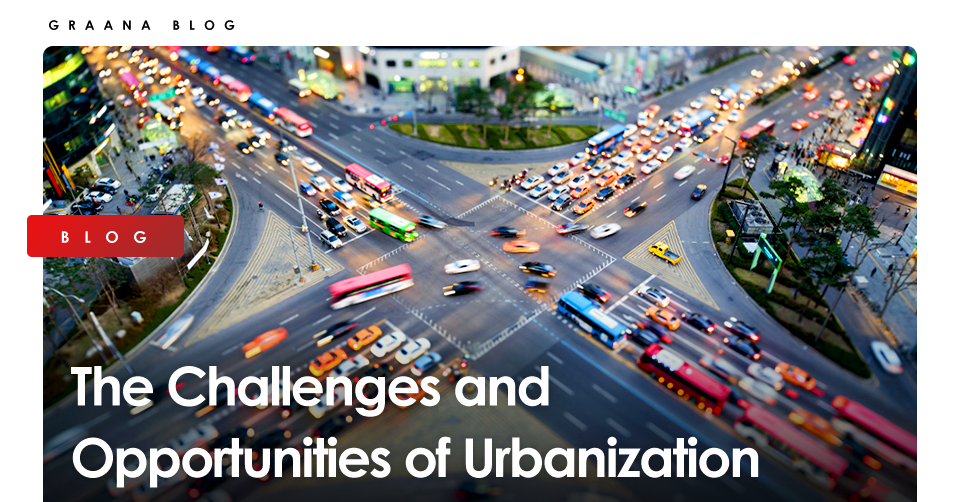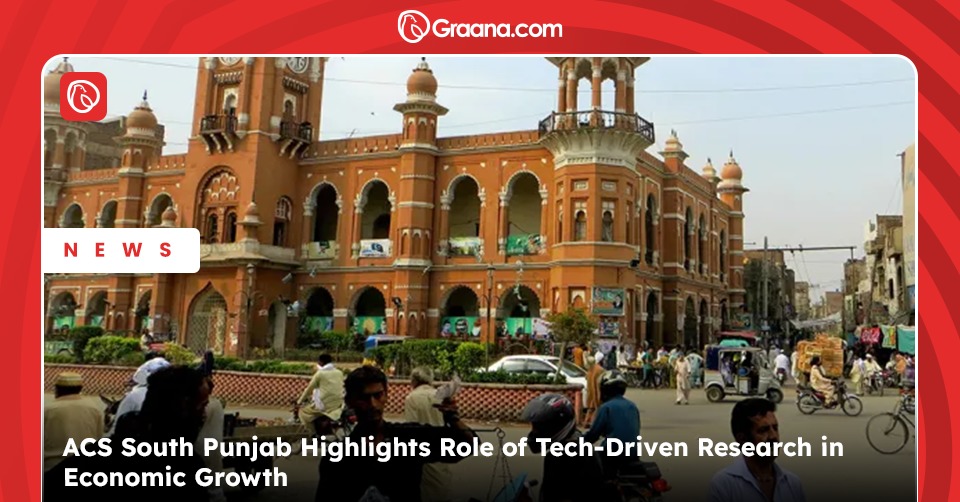Towns and cities have become the preferred locations for living. At the start of the 1800s, only 2% of the world’s population lived in the cities. Today, around 54% of the population lives in urban areas according to the statistics provided by the World Bank. This signals exponential growth in urbanisation mainly owing to the industrial revolution that encouraged people to migrate to the cities in search of employment.
Cities can provide several opportunities. By becoming centres of investment, cities can provide opportunities for innovation, development and social interaction. However, for sustainable development and proper functioning of the cities, government intervention is paramount to curtail the negative effects of excessive development and urbanisation.
Graana.com sets forth the challenges and opportunities of urbanisation in a move to shed light on the emerging situation.
Statistical Overview

The level of growth or urbanisation significantly varies by region. The world population in urban areas grew from 29% in the 1950s to 47% in 2000. In the 1950s, the percentage of people living in Africa, Asia, Europe, Latin America, North America and Oceania were 15%, 17%, 51%, 42%, 64% and 61% respectively. In 2000, the percentages were 37%, 37%, 73%, 76%, 79% and 73% for Africa, Asia, Europe, Latin America, North America and Oceania respectively.

The International Development Research Center (IDRC) provides a forecast of the percentage of population living in cities by 2050. The statistics reveal that in 2014 the percentages were 40%, 48%, 73%, 80% and 81% for Africa, Asia, Europe, Latin America and North America respectively. Similarly, the 2050 projections show that Africa, Asia, Europe, Latin America and North America will have 56%, 64%, 82%, 86% and 87% of the population living in developed areas.

In addition, statistical data is also available for the growth projections for developed and underdeveloped countries. For the most developed regions, the percentage of urban population in 2014 was 78% while it will be 85% in 2050. Similarly, for developing regions the percentage of urban population in 2014 was 48% while it will reach 63% in 2050. Lastly, the least developed regions had 31% of the population in urban areas while it will be 49% in 2050.
Challenges
Environmental Hazards
Uncontrolled urbanisation poses a threat to the environment and sustainability. According to a study, urban centres have half of the world’s land yet their consumption comprises more than three-fourths of its natural resources. This means that the increase in development and ultimately population settlement in developed areas have contributed adversely to the efficient utilisation of the natural resources. Similarly, as per United Nations report of 2011, urban centres contribute to 70% of the harmful greenhouse emissions. Therefore, the increased concentrated use of energy in the urban spaces contributes to air pollution, significantly impacting health. For example, the excessive use of automobiles generates an increased level of lead in the air rendering the air quality harmful for health.
Lack of Infrastructure
Urbanisation and population are growing hand in hand. With an increase in the influx of people moving to the cities, infrastructure is required to maintain the standard of living. As per the United Nations Department of Economics and Social Affairs (UNDESA) 2015 report, one in four urban settlers do not have proper sanitation facilities. In addition, each year, 828 million people live in temporary housing where basic necessities like drinking water and sanitation are absent.
While the governments realise the problems associated with the lack of infrastructure, they are not given their due attention. However, experts have helped bring the issue to limelight. Experts at PwC (PricewaterhouseCoopers) estimate that in the next ten years, about $ 8 trillion will be allocated to the development of infrastructure in New York, Beijing, Shanghai, and London to support urban development. This figure does not include the world’s other mega cities, with a population of more than 10 million people.
Marginalisation of Poor
With the large influx of people into the cities, problems may arise for the poor. These poor usually migrate with their families and domestic animals rendering themselves vulnerable in the process. In some cases, these families sell everything they have in the villages in hopes of a better life in the city. However, the outcome is not always favourable. With little skills to offer, the supply of such individuals is abundant. This further contributes to their exploitation at the hands of their employers. Not only this, most poor people live in slums with their livestock in unhygienic and unsanitary living conditions. As per reports, 27% of the people living in developing areas have no facility of piped water in their houses. Such living arrangements result in the spread of communicable diseases. Ultimately, the diseases find their way to the cities where explosive population density further spreads the disease.
Opportunities
Smart Cities
The concept of smart cities is relevantly new and has been developed in response to the challenges faced by the population growth and rapid unsustainable development. There is debate regarding what exactly constitutes a smart city but the general understanding is that a city makes use of information and technology to produce creative solutions to urban problems. As per the World Development Report of 2016, inclusion, efficiency, and innovation are key tenets of smart cities. Firstly, smart cities are inclusive. They further the essence of community building to collectively address concerns faced by cities. Secondly, smart cities are efficient. Cities make use of technology to gather information and data to provide smart solutions to everyday problems. Thirdly, smart cities are innovative. These cities provide clever solutions to further sustainability and mitigate problems. For example, the re-purposing of solid waste for agricultural purposes is one such way waste can be minimised.
Economic Growth
One of the opportunities provided by urbanisation is the chance to capitalise on economic growth. With an increase in influx of people into the cities, necessary infrastructure needs to be built. For this purpose, the governments have to take active steps to undertake town planning in order to facilitate the people. This is done through the development of the city through construction of facilities like new hospitals, schools, roads etc. According to experts, the spending on smart cities will be as high as $1 trillion in cities such as Masdar City in Abu Dhabi and Migaa in Nairobi. If implemented successfully, these will provide a benchmark for the development of future cities.
In a nutshell, the world population is increasingly settling in the urban centres and are bringing a new set of issues with them. These problems, if not addressed, will seriously affect the standard of living of the people, resulting in a spiral of related problems. They will further have a devastating effect on the economy and as a result, the world economy, given that in today’s world of capitalism and dependency, the countries are trading with each other with 300 largest cities contributing to the majority of the world’s economy. However, with these challenges, there is also an opportunity to get creative and provide smart solutions.
For more blogs, visit Graana.com




